



As US Big Tech earnings are out, Bitcoin is back in the spotlight. Sometimes it moves like tech stocks, other times it goes its own way. That’s why many debate whether Bitcoin is a “high-beta Nasdaq proxy,” a kind of leveraged play on tech sentiment.
The chart below shows why this idea persists: Bitcoin has significantly outperformed both the Nasdaq and even a 2x leveraged Nasdaq index (designed to double the daily returns or losses of the Nasdaq) over the past three years.
But Bitcoin isn’t just a “tech stock in disguise.”
Bitcoin is an asset shaped by multiple narratives. Designed as a tool for monetary resilience, Bitcoin was never meant to mirror corporate earnings cycles or tech multiples. It behaves like a growth asset in some macro regimes, and like a hedge in others. That duality is at the core of Bitcoin’s strength.
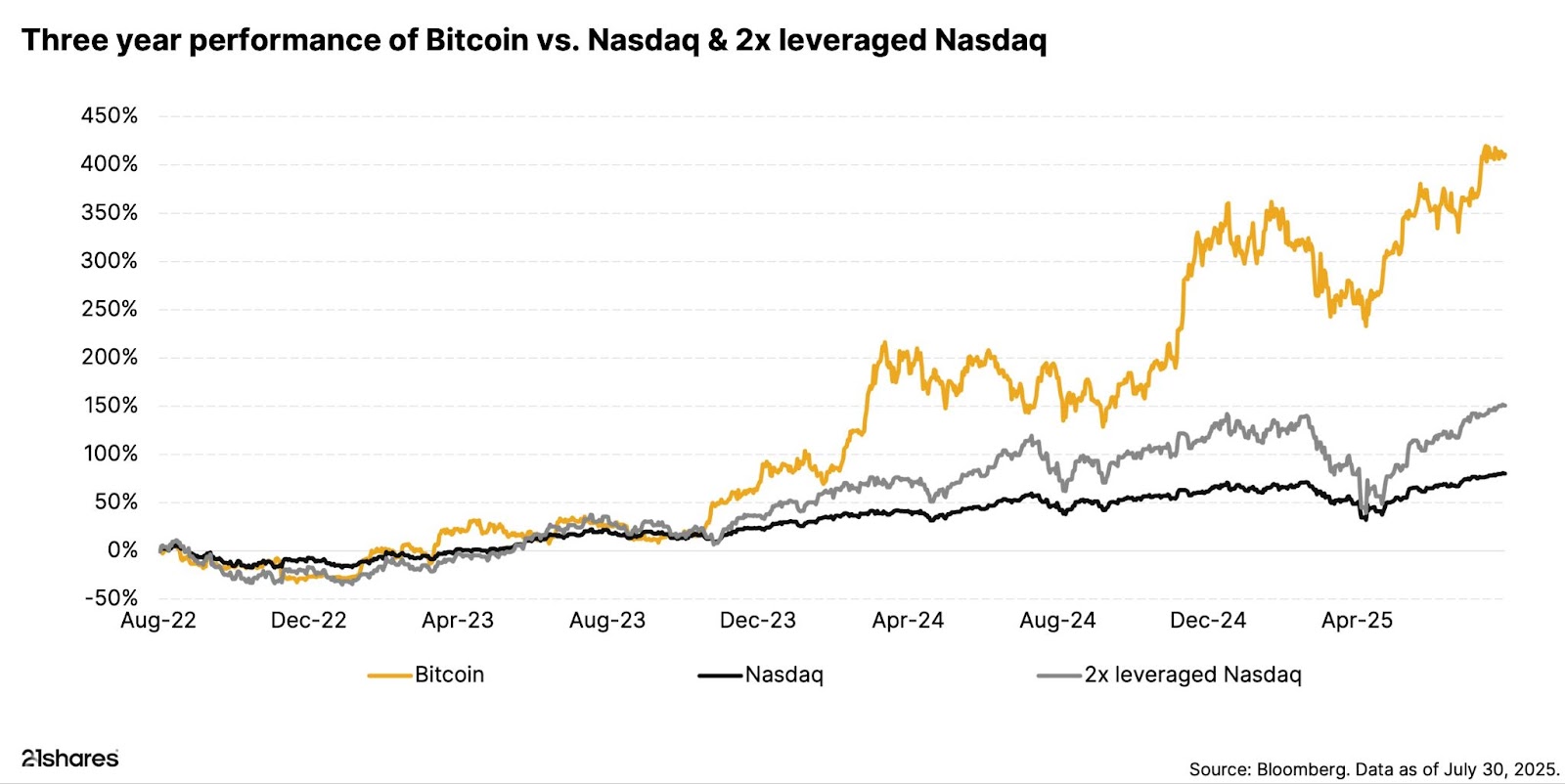
Bitcoin vs. Nasdaq vs. 2x Leveraged Nasdaq
To better understand this divergence, we turn to performance spreads, comparing Bitcoin to the Nasdaq, and separately, the 2x leveraged Nasdaq to its underlying vanilla index.
The divergence becomes clear in late 2024, after Trump’s election win, seen as a turning point for crypto regulation. While the Nasdaq stayed flat, Bitcoin started to break away.
By mid-2025, tech stocks fell on renewed trade worries, and the 2x leveraged Nasdaq dropped even more. But Bitcoin held up better, showing signs of acting as a macro hedge during uncertainty.
This contrast shows how the leveraged Nasdaq simply magnifies tech stock moves. Bitcoin is different as unique factors outside the tech world drive its price moves.
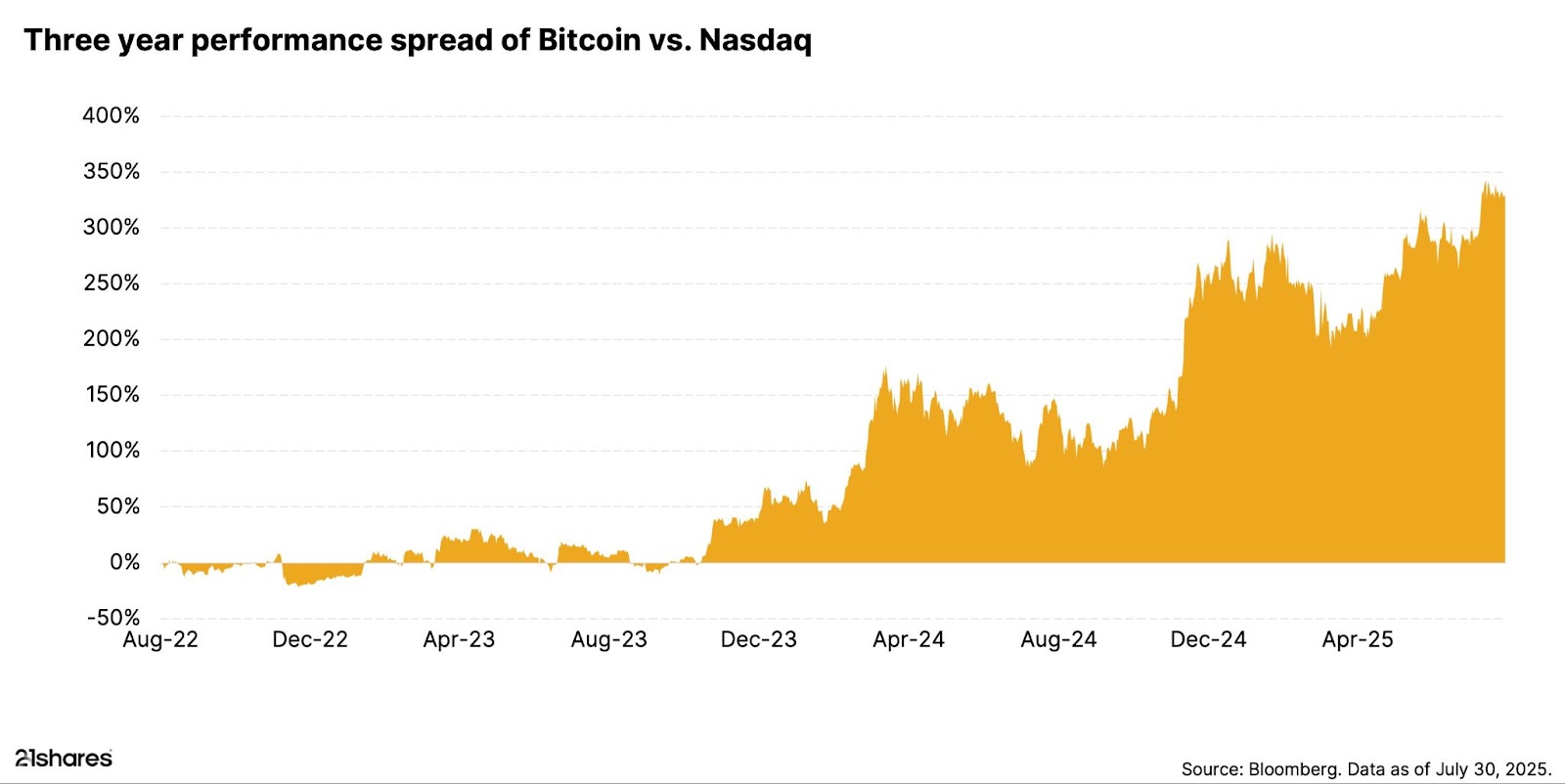
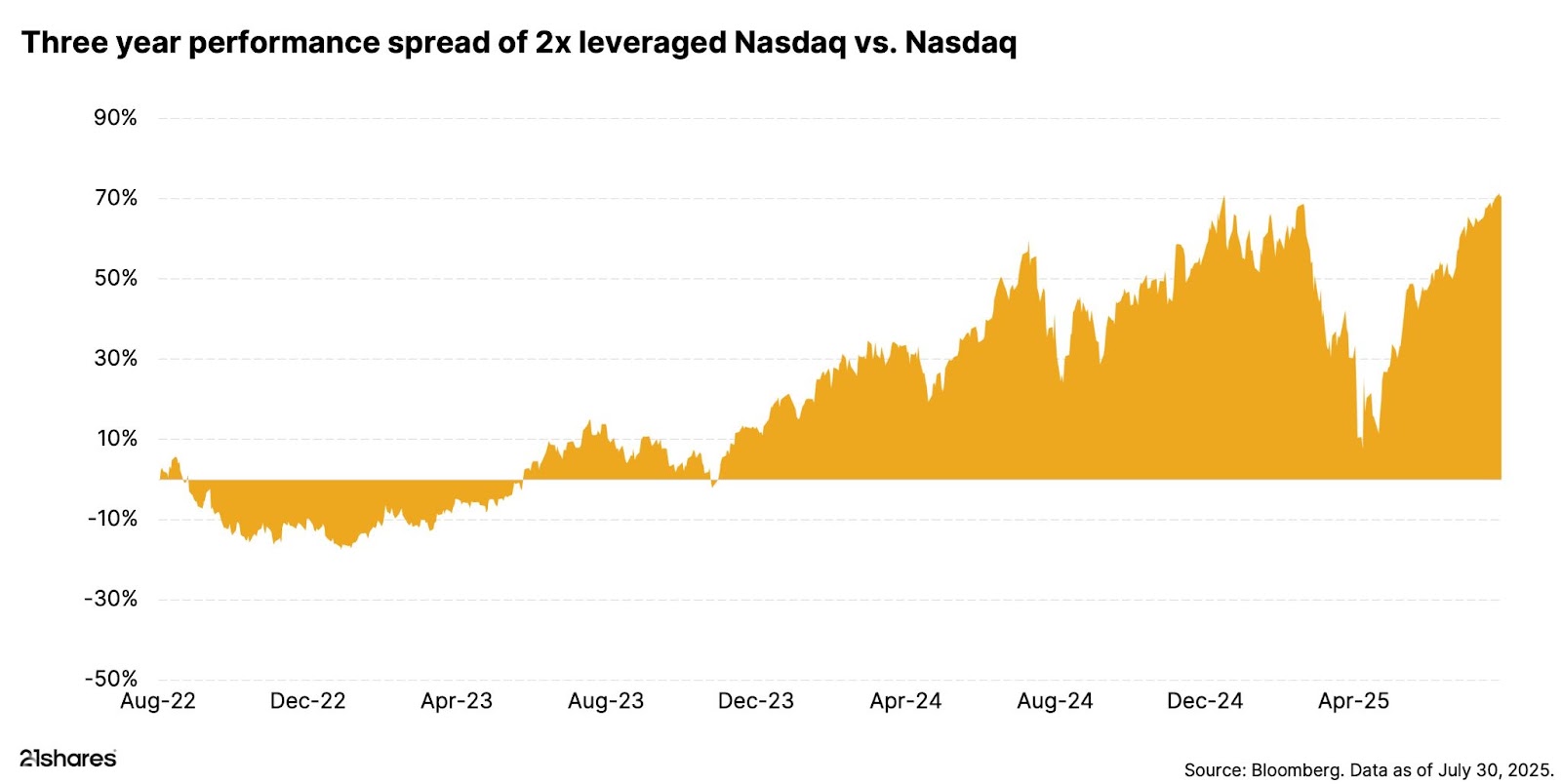
That pattern also holds in scatter analysis. A regression of cumulative returns shows that Bitcoin has a beta of around 0.7 to the Nasdaq, which is below the expectations of a leveraged asset. But more telling is the variance in Bitcoin’s performance: its returns deviate significantly from the regression line, especially during outlier events.
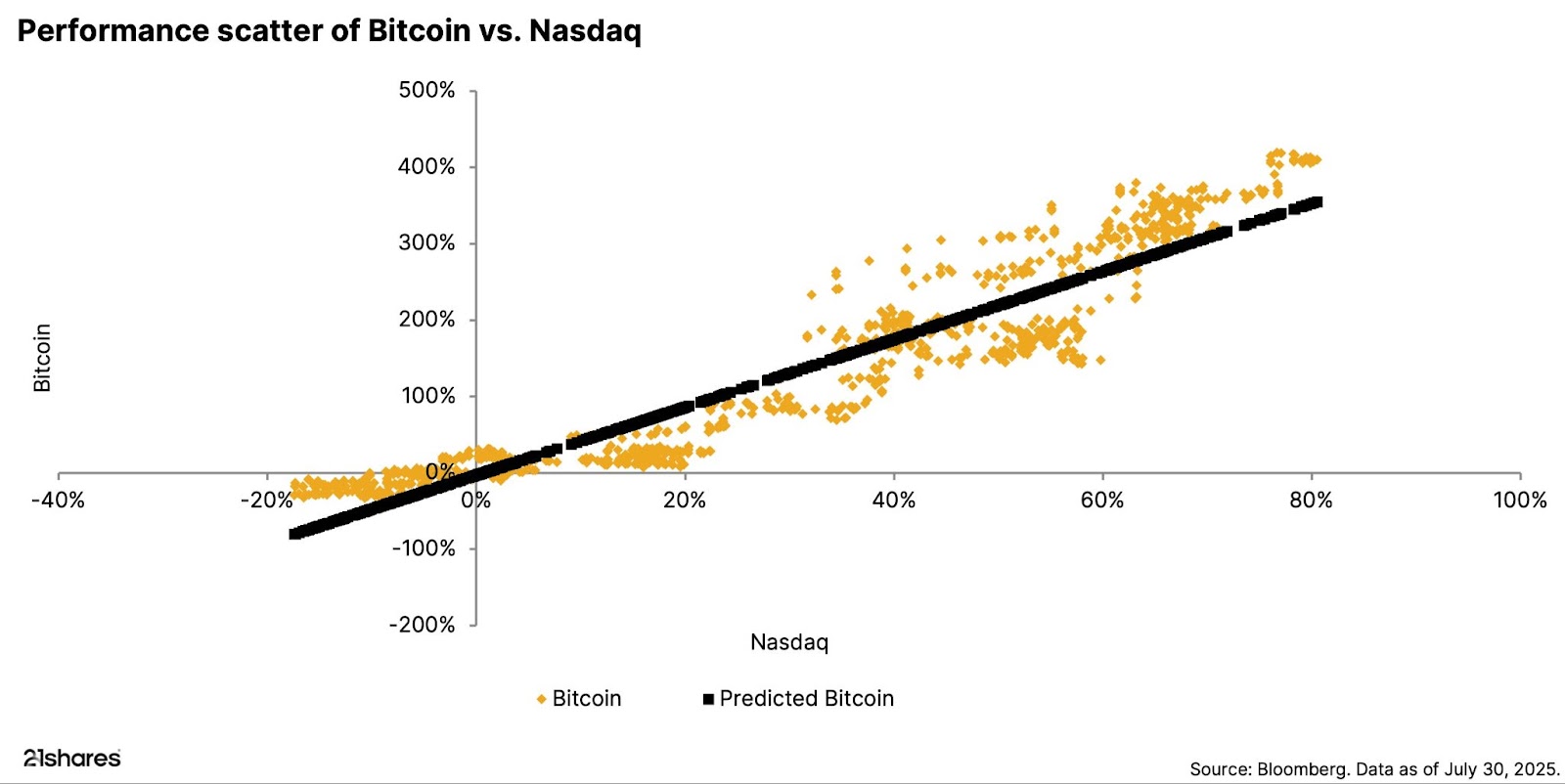
Now compare that with the 2x Leveraged Nasdaq. Here, the relationship is much tighter with a beta that aligns closely with expectations of 2.0. The data hugs the trendline, with drawdowns and rallies largely mirroring the Nasdaq directionality, just scaled up.
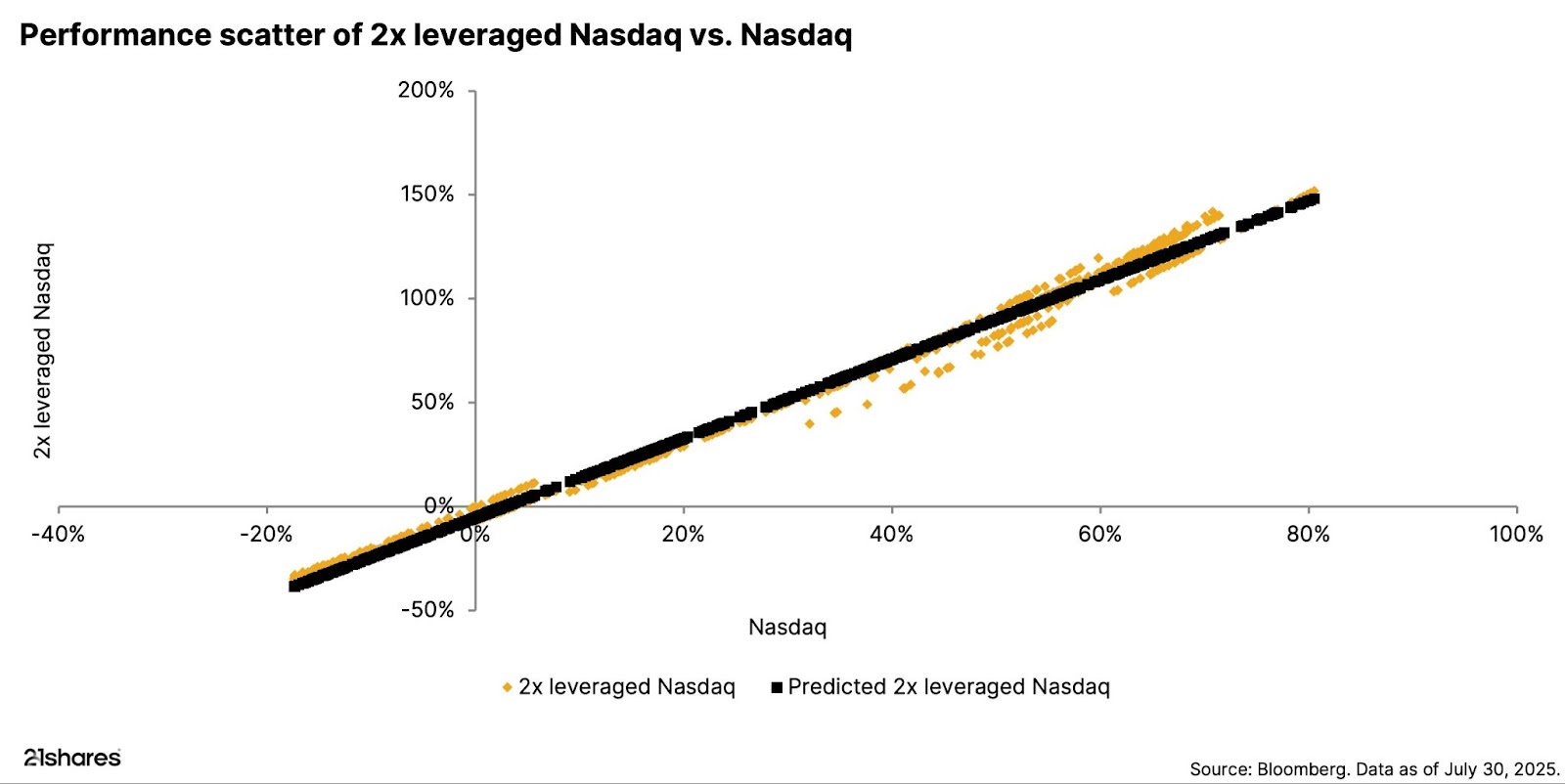
Bitcoin’s correlation with the Nasdaq is low
The chart below shows that Bitcoin’s correlation with the Nasdaq is low, around 35%, and it’s not stable. It can rise during big market rallies but often breaks down during major economic shifts, highlighting Bitcoin’s unique behavior.
Two recent examples stand out:
- In April 2025, as trade tensions rattled equity markets, Bitcoin's correlation collapsed.
- In July 2025, amid regulatory optimism and institutional inflows, Bitcoin rallied sharply while tech remained relatively flat.
These decoupling moments are valuable. They enable Bitcoin to act as either a return amplifier or a volatility buffer, depending on the prevailing market conditions.
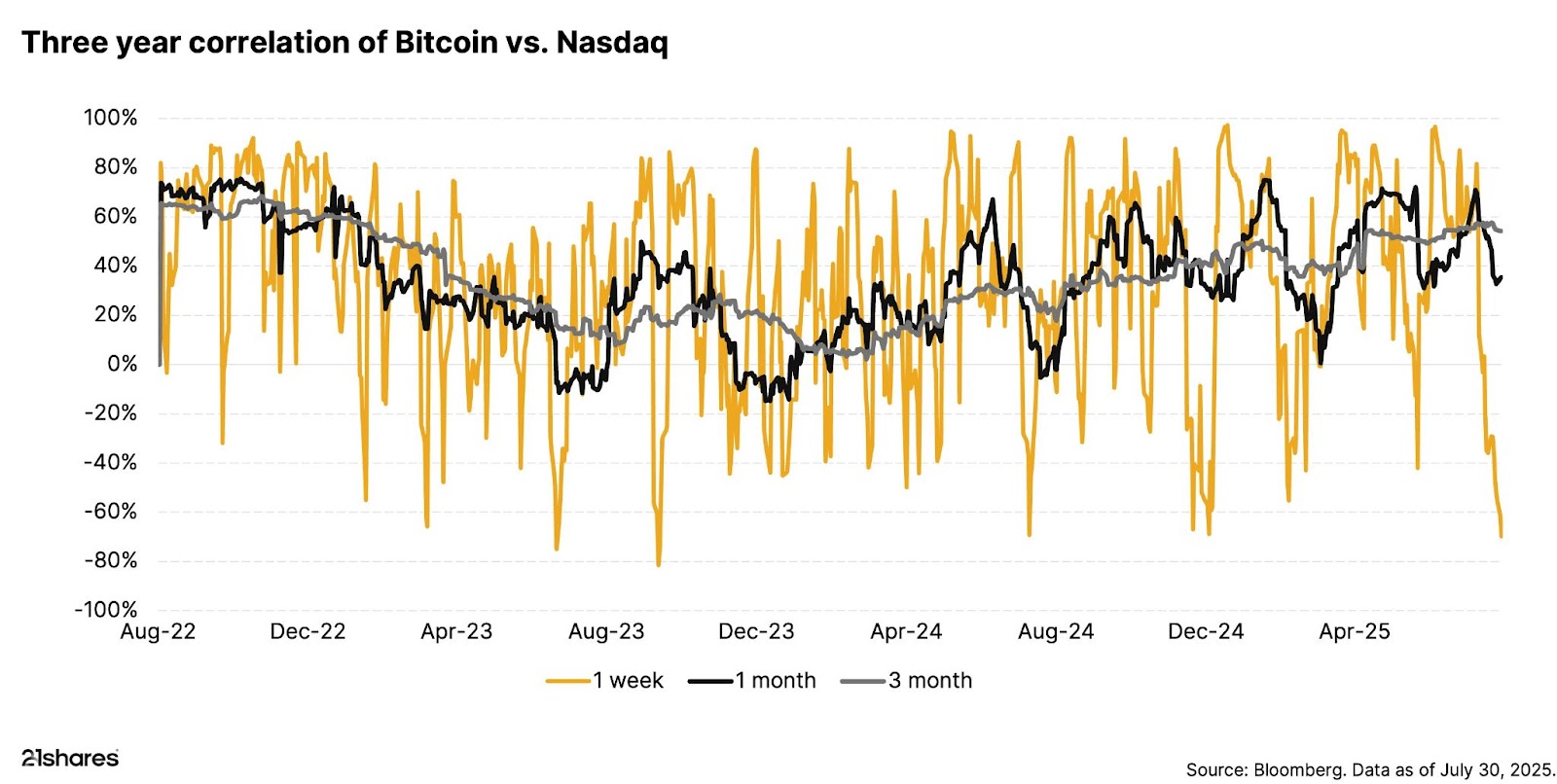
The bottom line
Bitcoin’s unique performance, lower correlation with technology stocks, and evolving relationship with the market indicate that it behaves asymmetrically in meaningful ways.
This debunks the notion of Bitcoin as a simple leveraged Nasdaq play. Instead, it’s becoming a new kind of macro asset, still growing but already offering a distinct investment option that traditional stocks can’t match. For investors looking for something different, Bitcoin stands apart.
This report has been prepared and issued by 21Shares AG for publication globally. All information used in the publication of this report has been compiled from publicly available sources that are believed to be reliable, however, we do not guarantee the accuracy or completeness of this report. Crypto asset trading involves a high degree of risk. The crypto asset market is new to many and unproven and may have the potential not to grow as expected.Currently, there is relatively small use of crypto assets in the retail and commercial marketplace in comparison to relatively large use by speculators, thus contributing to price volatility that could adversely affect an investment in crypto assets. In order to participate in the trading of crypto assets, you should be capable of evaluating the merits and risks of the investment and be able to bear the economic risk of losing your entire investment.Nothing herein does or should be considered as an offer to buy or sell or solicitation to buy or invest in crypto assets or derivatives. This report is provided for information and research purposes only and should not be construed or presented as an offer or solicitation for any investment. The information provided does not constitute a prospectus or any offering and does not contain or constitute an offer to sell or solicit an offer to invest in any jurisdiction. The crypto assets or derivatives and/or any services contained or referred to herein may not be suitable for you and it is recommended that you consult an independent advisor. Nothing herein constitutes investment, legal, accounting or tax advice, or a representation that any investment or strategy is suitable or appropriate to your individual circumstances or otherwise constitutes a personal recommendation. Neither 21Shares AG nor any of its affiliates accept liability for loss arising from the use of the material presented or discussed herein.Readers are cautioned that any forward-looking statements are not guarantees of future performance and involve risks and uncertainties and that actual results may differ materially from those in the forward-looking statements as a result of various factors.This report may contain or refer to material that is not directed to, or intended for distribution to or use by, any person or entity who is a citizen or resident of or located in any locality, state, country or other jurisdiction where such distribution, publication, availability or use would be contrary to law or regulation or which would subject 21Shares AG or any of its affiliates to any registration, affiliation, approval or licensing requirement within such jurisdiction.


.svg)
